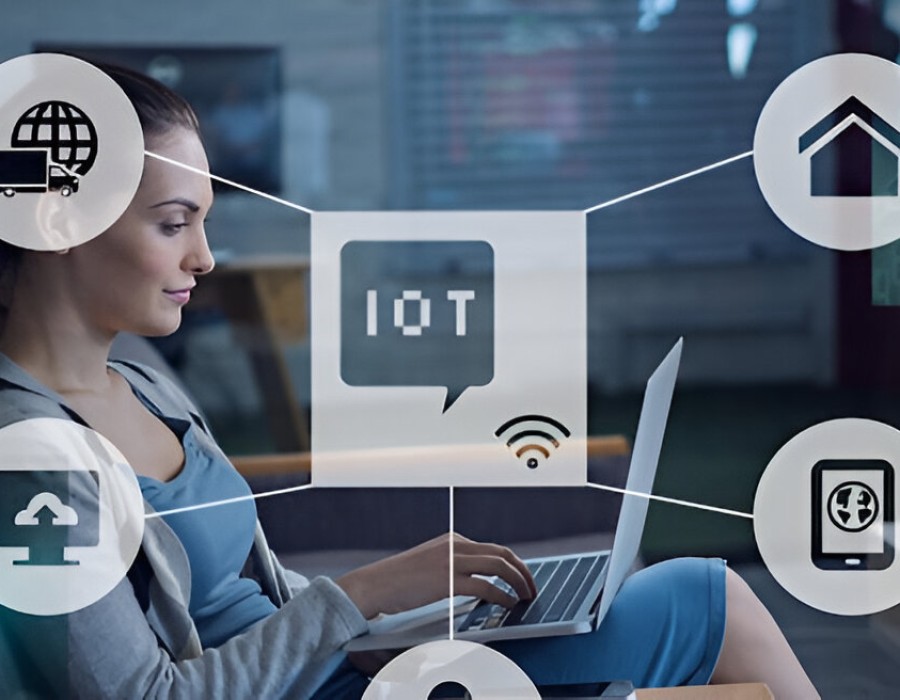The future of smart infrastructure lies in IoT building automation, a powerful combination of connected devices and intelligent software that helps monitor, control, and optimize various building functions. From energy management to security, building automation systems are revolutionizing how commercial and residential spaces are managed, offering smarter, safer, and more sustainable environments.
Let’s explore what IoT building automation means, its top features, benefits, and how building automation solutions can add value to businesses and property owners alike.
1. Smart Buildings Operate on Connected Intelligence
IoT building automation integrates smart sensors, cloud computing, and intelligent controls to streamline building operations. It integrates HVAC, lighting, security, and other systems into a single, cohesive platform. This creates intelligent buildings that are not only energy-efficient but also capable of self-regulation and predictive maintenance, ensuring a more productive and cost-effective environment.
2. Energy Efficiency Becomes a Standard Practice
With IoT building automation, energy waste is significantly reduced. Automated systems regulate heating, cooling, and lighting by analyzing occupancy patterns and weather conditions. Real-time energy monitoring allows for better control and reduced utility bills. This makes building automation systems an essential part of any green building strategy or sustainability effort.
3. Real-Time Monitoring Enables Immediate Response
A major benefit of building automation solutions is their ability to access and react to real-time data. Facility managers receive instant alerts about equipment failures, temperature deviations, or security breaches. This ensures immediate action, reducing downtime and avoiding potential damage or costly maintenance.
4. Enhanced Comfort Boosts Productivity Levels
IoT-enabled building automation systems personalize temperature, lighting, and air quality settings based on user preferences and occupancy patterns. This creates more comfortable spaces for occupants, increasing productivity and satisfaction. These systems are ideal for offices, hospitals, and schools, where comfort directly impacts performance and well-being.
5. Predictive Maintenance Prevents Equipment Failure
Instead of waiting for equipment to break down, IoT-based automation predicts when a system will require maintenance. Sensors identify anomalies and patterns, enabling prompt maintenance and service. This predictive approach prevents costly repairs, extends asset life, and ensures that facilities run smoothly and without interruption.
6. Centralized Control Improves Management Efficiency
From one dashboard, facility managers can monitor and manage multiple building systems. Whether on-site or remote, access to data and controls improves decision-making, reduces manual work, and ensures consistency across all operations.
7. Seamless Integration with Smart Technologies
Modern IoT building automation platforms support integration with smart assistants, mobile apps, and cloud-based services. This means greater flexibility in control and data visualization. Users can adjust settings, monitor systems, or generate reports from anywhere, improving convenience and responsiveness in managing building operations.
8. Cost Savings Across Multiple Functions
IoT building automation directly impacts the bottom line. From energy savings and reduced labor costs to lower maintenance expenses, businesses benefit from significant cost reduction. Over time, these savings justify the investment in building automation systems, making them a must-have for modern infrastructure.
9. Enhanced Security and Surveillance Measures
IoT building automation enhances safety by integrating with security systems such as smart locks, motion detectors, CCTV, and alarms. These tools work in harmony to detect threats and take preventive action.
10. Sustainability Goals Made Easier to Achieve
For companies committed to eco-friendly practices, building automation solutions play a vital role. IoT systems help lower carbon emissions, optimize energy usage, and support certifications such as LEED and Energy Star. Smart buildings contribute to long-term sustainability, helping meet environmental goals without compromising on comfort or performance.
Key Features of IoT Building Automation
The functionality of IoT building automation lies in its innovative features. These tools work together to ensure that buildings operate at peak performance with minimal human intervention.
Real-Time Data Analytics: Monitor and analyze live data from building systems for insights and performance optimization.
Remote Accessibility: Access and control systems via cloud-based platforms or mobile apps from anywhere.
Automated Scheduling: Set automatic routines for lighting, HVAC, and access control based on occupancy and time.
Integration Capabilities: Seamlessly connect with third-party software, sensors, and smart devices.
Fault Detection & Diagnostics: Identify and resolve system faults automatically before they escalate.
User-Friendly Dashboards: Intuitive interfaces for facility managers to view, manage, and analyze building operations.
Major Benefits of IoT Building Automation
From operational excellence to cost-effectiveness, building automation systems offer numerous benefits that make them a top choice for commercial, residential, and industrial facilities.
Energy Efficiency: Automatically optimize power usage, significantly reducing electricity and utility costs.
Improved Comfort: Personalized settings and climate control create a more pleasant indoor environment.
Operational Efficiency: Minimized manual intervention and improved facility management.
Cost Reduction: Save on maintenance, labor, and energy expenses through automation and analytics.
Scalability: Easily scale systems for large facilities or growing infrastructure needs.
Conclusion
As modern buildings evolve, the integration of IoT building automation systems is no longer a luxury, it’s a necessity. From optimizing energy usage to ensuring occupant safety and comfort, these smart building automation systems offer unmatched value. Investing in building automation solutions not only improves efficiency and sustainability but also future-proofs properties for long-term growth.
Whether you're managing a corporate office, hospital, educational institution, or smart home, embracing IoT technology will transform your building into a responsive, cost-effective, and intelligent environment. Start exploring the possibilities of IoT-driven automation and make your building smarter today.





Comments